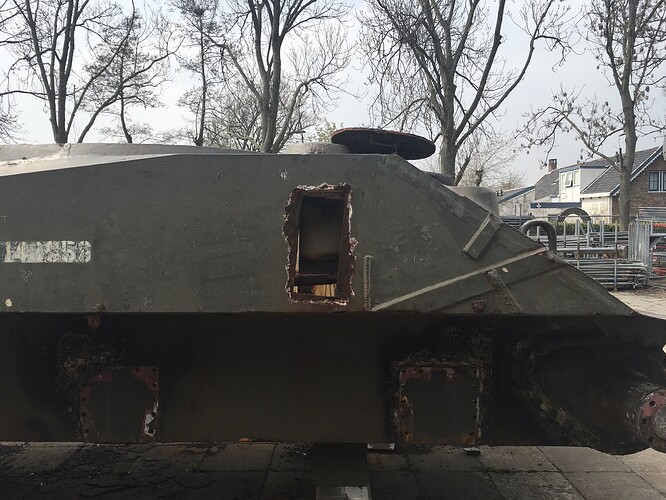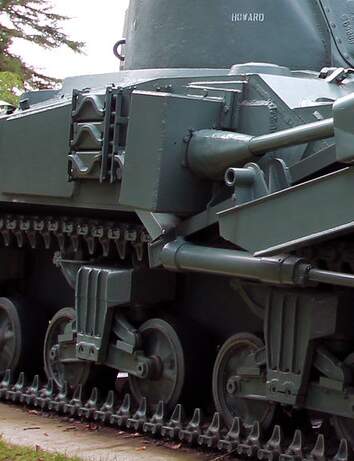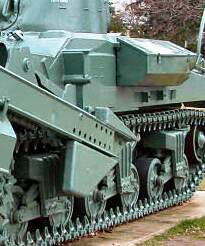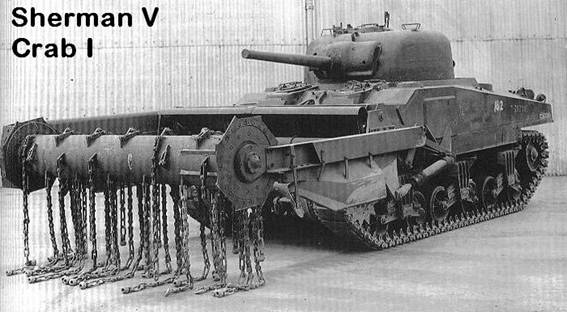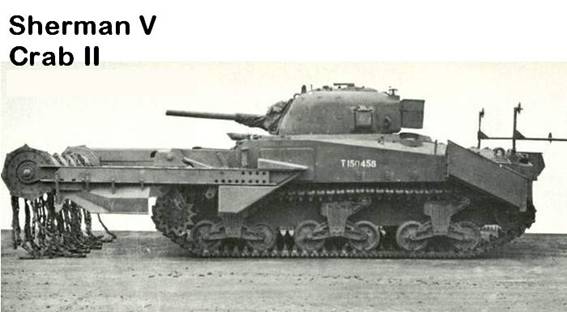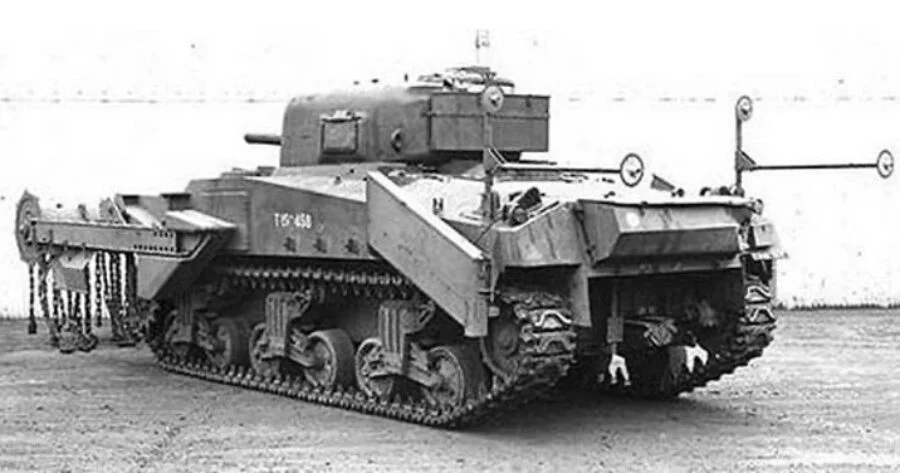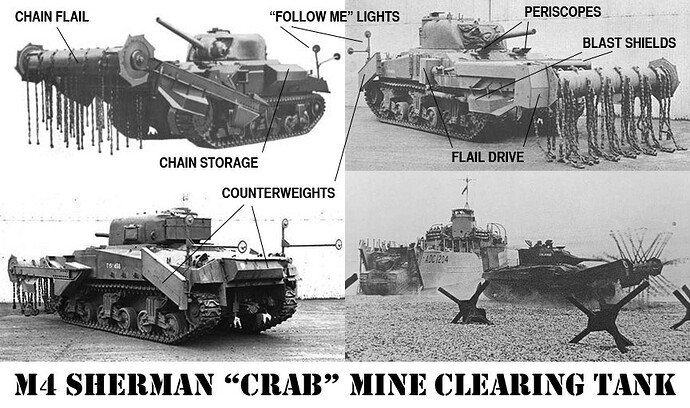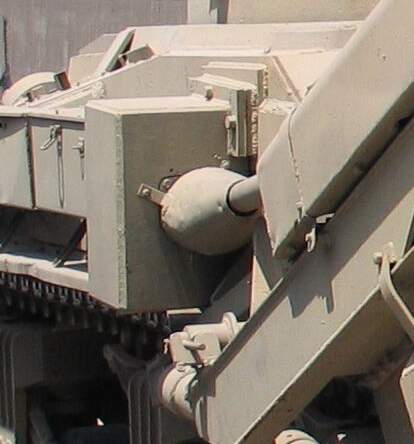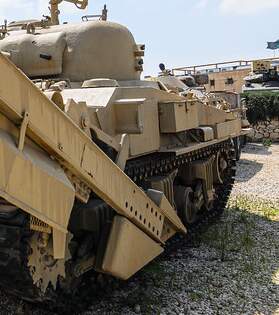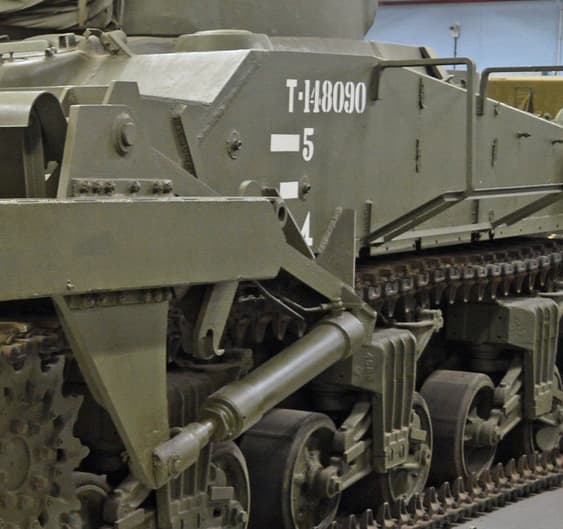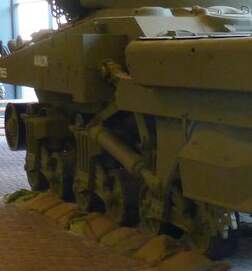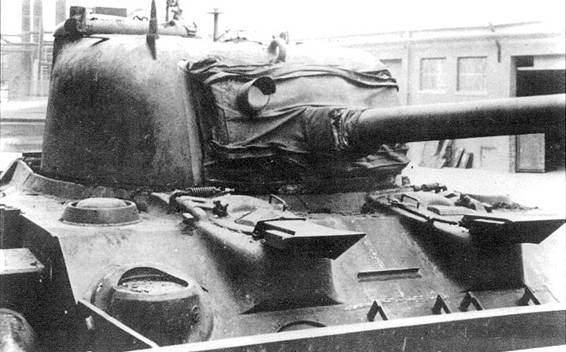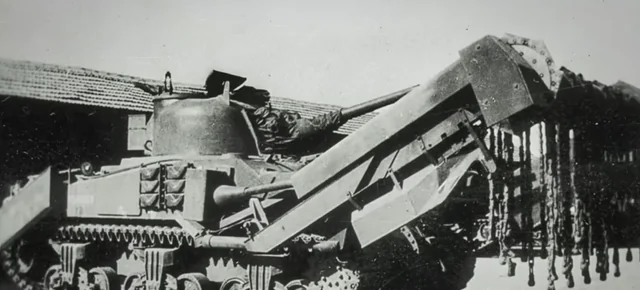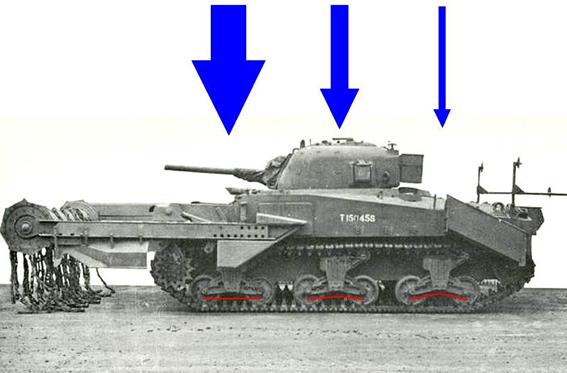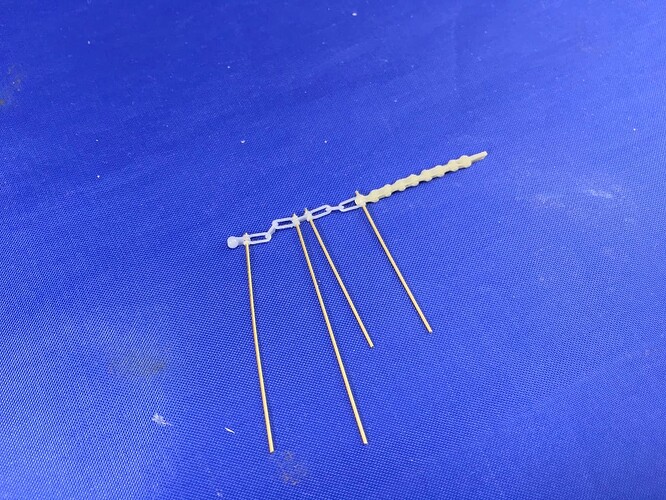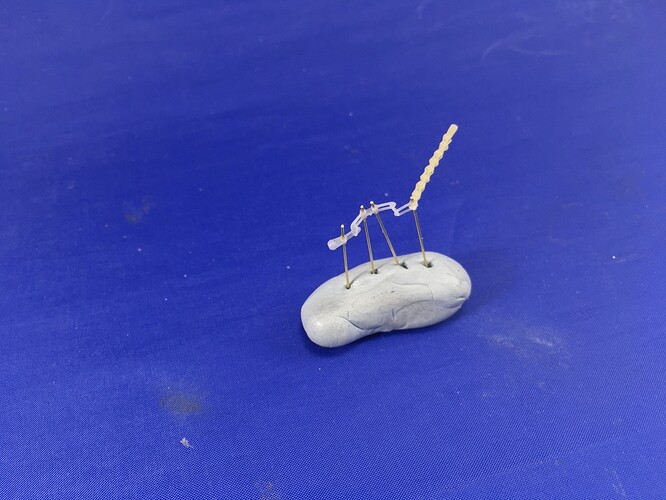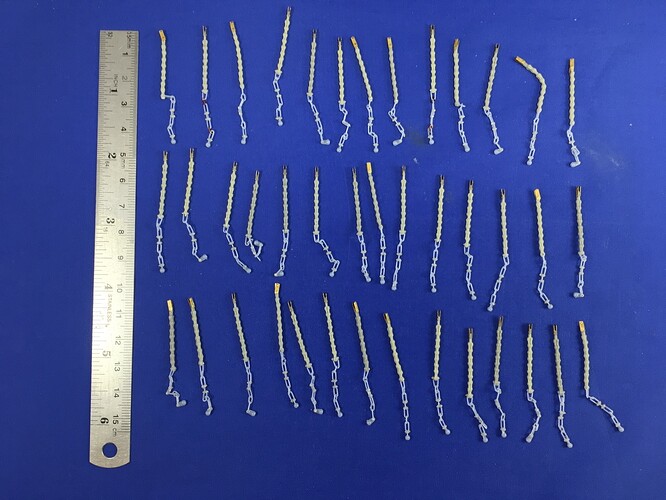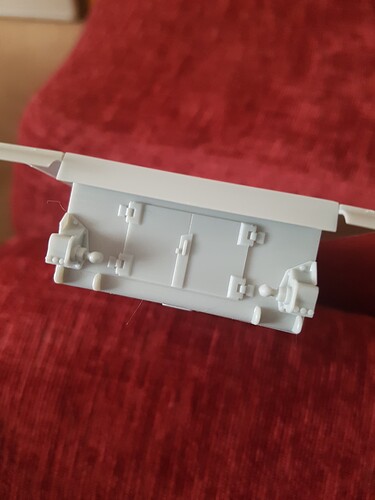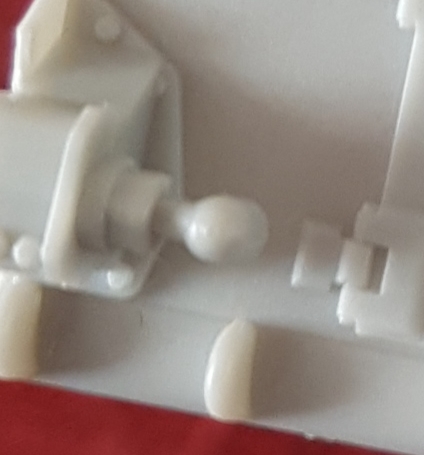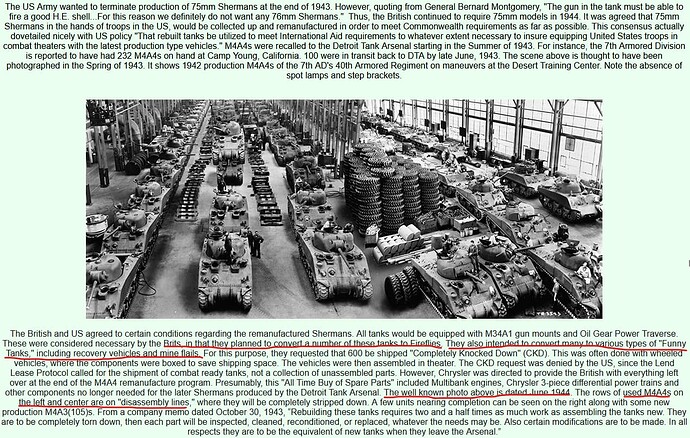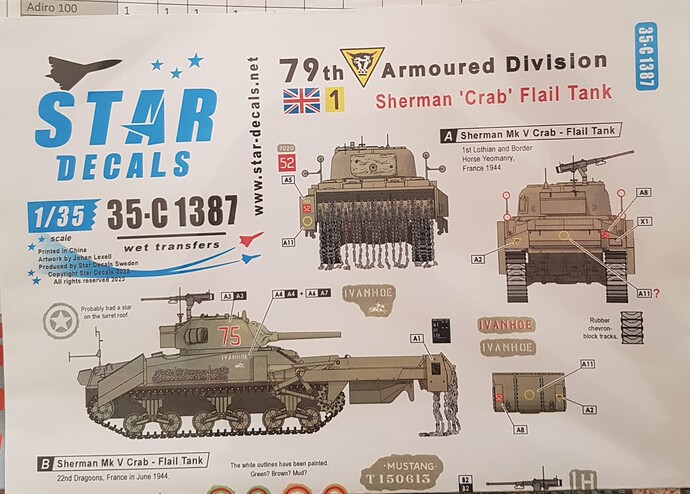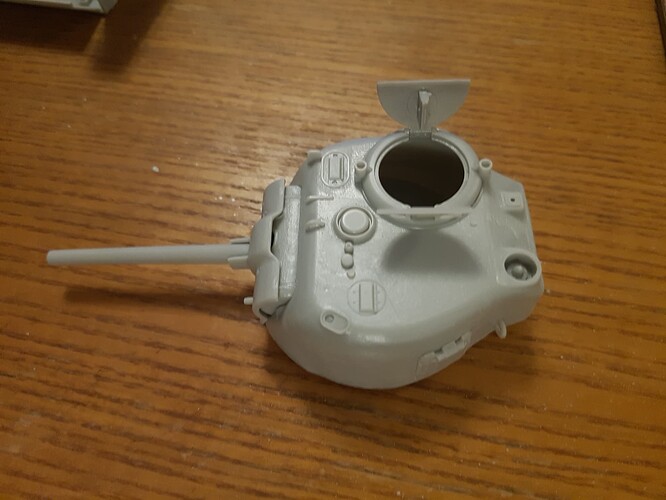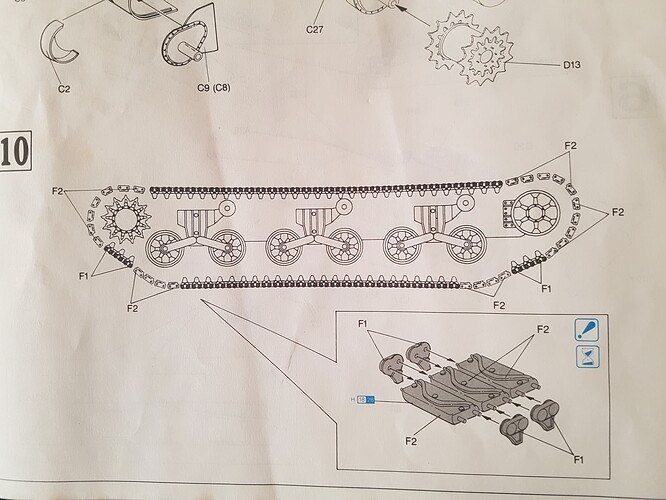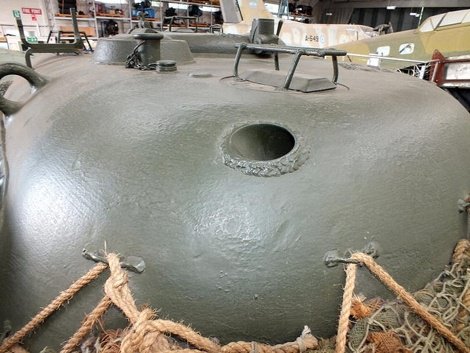Sorry, but no ![]() All Crab chains were specialised types, as @petbat showed in a post above, and none used regular chain except perhaps as an emergency substitute. The only picture I can recall offhand with normal, everyday chain is a well-known one of a Crab in American service. The most common type seems to have been a complicated affair that looks like a bicycle chain for the “top” half while the rest then consists of elongated D-clasps, chain-type links and flat plates in a particular sequence.
All Crab chains were specialised types, as @petbat showed in a post above, and none used regular chain except perhaps as an emergency substitute. The only picture I can recall offhand with normal, everyday chain is a well-known one of a Crab in American service. The most common type seems to have been a complicated affair that looks like a bicycle chain for the “top” half while the rest then consists of elongated D-clasps, chain-type links and flat plates in a particular sequence.
Except that Crab gear almost certainly wouldn’t fit on a tank with appliqué armour plates, because that makes the hull there 5 cm wider. The right-hand plate would also make it more difficult to do this:
… which is necessary for the flail gear, because this is the hole through which the chain that drives the flail, exits the hull.
Note the hole isn’t vertical, but angled forward slightly. This is because the chain was at 90° to the drive shaft, and therefore, so was the chain case that protected the crew from the spinning chain. The armoured housing on the outside of the tank, that the flail drive shaft runs forward from, is therefore also angled forward by the same amount. (I mention this because a lot of people building Crab models install it at right angles to the sponson floor.)
The tank in that photo, BTW, is this one:
As in that exact tank, only about 75 years later when it was being restored in April 2021 before being put back in its normal location as a memorial.
Yes, it is, but that’s because this particular tank had stood outside in a village street for almost three years when that picture was taken. The No. 5 roadwheel arm is held up by a length of chain to prevent it jamming into the track, because that photo was (is my assessment) taken very shortly before this one:
The CMP is almost certainly the one whose roof is visible in the picture of the same tank by the houses.
